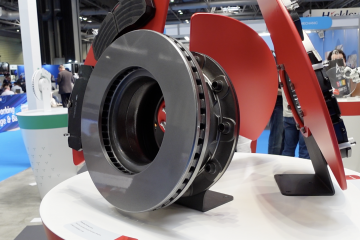The Institute of the Motor Industry (IMI) is looking towards next year, with both promises and warnings for the 12 months ahead, including an increasing skills gap.
The industry body warns that with more vehicles featuring more advanced autonomous elements taking to the roads at a time when business and consumer purse strings are stretched almost to breaking point, it could be a year of acute contrast, especially with a growing skills gap in the automotive industry.
Next year will see Level 3 ready autonomous vehicles, capable of driving themselves in particular conditions whilst taking control of all safety-critical systems, enter the market for the first time.
However, the ongoing skills gap and lack of training budgets available to many, means there are not enough technicians with the right skills to properly service and maintain these technologically advanced vehicles.
The IMI has said it will work closely with the government regarding the emerging regulation of this technology, weaving this into the skills provision offered to professionals.
“The CBI says that the skills gap will be with us for the long term, so employers need to plan long term,” commented Steve Nash, CEO of the IMI. “Although apprenticeship numbers have increased significantly, they still aren’t at the pre-pandemic levels they need to reach if we are to avoid long term challenges in finding the talent our industry needs.
“With the skills gap widening and costs increasing rapidly, I have real concerns about the future of our industry, and the impact of employers having to make the tough choice between keeping the lights on and spending on essential training.”
Cutting costs
“As the current economic challenges continue into the New Year, drivers are looking to cut costs wherever possible,” adds Hayley Pells, IMI Policy Manager. “It has been suggested that motorists will feel the MOT test is an unnecessary expense with RAC research saying that many will continue to use their vehicle even when the MOT has expired.
“If MOT tests are indeed pushed off the priority list, it’s not an unfair assumption that the more expensive maintenance costs including vital checks on autonomous and driver assistance systems will also fall down the to-do list, leaving in their wake a perfect storm for road safety disaster.”
Diversity imperative for skills gap to close
To see the industry grow and prosper despite ongoing challenges, Steve Nash also believes employers need to get serious about Equality, Diversity and Inclusion (EDI).
“We have no chance of addressing our skills gap without widening our appeal to currently under-represented groups. Through the IMI Diversity Task Force, we will continue to focus on providing employers with practical solutions they can apply with both their existing and future employees. We believe this will, in turn, increase the gender, ability and ethnic diversity of the industry and address the growing skills gap.”
The move to an ‘Agency’ distribution model is also likely to become a reality in 2023 with Mercedes-Benz being the first OEM to taking that leap, and others set to follow suit. While there is still uncertainty about the new challenges and opportunities this will bring, there is no doubt that it will change roles at OEM and dealer level – manufacturers will take on the primary sales role while dealers refocus on the customer relationship management. Steve Nash believes this shift will create a real opportunity for investment in skills because it will be even more of a customer choice differentiator.
The sector also needs to be ready for challenge from outside automotive as Hayley Pells explains: “Looking at external influences, Uber has outsourced their AI programming language, Pyro, and have an ambitious car programme. Indeed software defined vehicles are going to be a whole new shouting match with the big players teaming up – Renault with Google for example are creating a ‘digital twin’, a virtual copy of a vehicle that offers advanced artificial technology capabilities reportedly to allow ‘for easier and continuous integration of new services into the vehicle and the creation of new onboard and offboard applications’.
“All of this means that 2023 should see us take a big leap into the future of road travel, but the industry needs to come together to ensure it is ready to help not hinder this exciting progress.”



